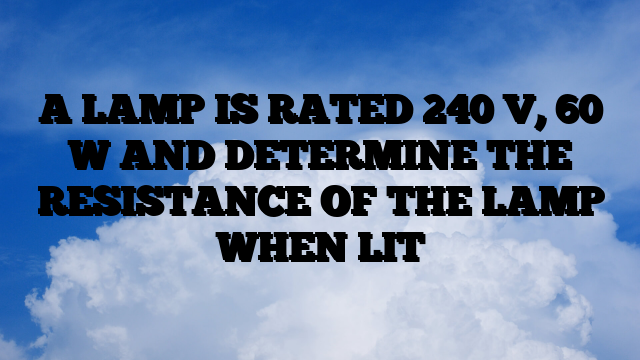
A LAMP IS RATED 240 V, 60 W AND DETERMINE THE RESISTANCE OF THE LAMP WHEN LIT
To determine the resistance of a lamp when it is lit, we can use Ohm’s Law. Ohm’s Law states that the current flowing through a conductor is directly proportional to the voltage applied across it and inversely proportional to its resistance. The formula for Ohm’s Law is:
I = V / R
Resistance (R) = Voltage (V) / Current (I)
In this case, we are given that the lamp is rated at 240 volts and 60 watts. We can use the power equation to find the current flowing through the lamp:
Power (P) = Voltage (V) * Current (I)
Rearranging the equation, we can solve for the current:
Current (I) = Power (P) / Voltage (V)
Substituting the given values, we have:
Current (I) = 60 watts / 240 volts
Current (I) = 0.25 amperes
Now that we know the current flowing through the lamp, we can calculate its resistance using Ohm’s Law:
Resistance (R) = Voltage (V) / Current (I)
Resistance (R) = 240 volts / 0.25 amperes
Resistance (R) = 960 ohms
Therefore, when the lamp is lit, its resistance would be 960 ohms.

Don Steve is an education enthusiast and blogger passionate about making learning accessible, engaging, and impactful. With a focus on practical strategies, academic insights, and personal growth, he shares resources that empower students, educators, and lifelong learners to thrive in and beyond the classroom.







